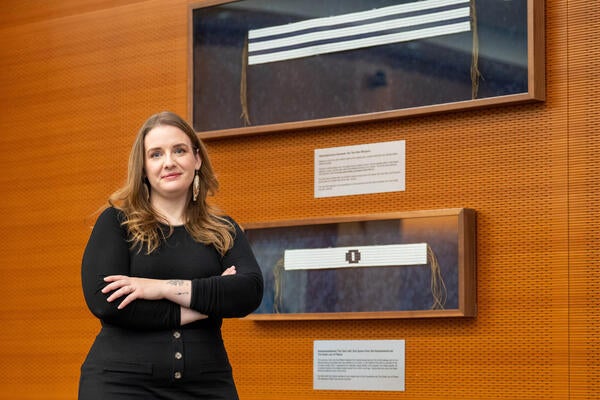
Social inclusion of women by male colleagues in STEM fields can improve their workplace experience
Organizations working to meaningfully improve diversity and inclusion in STEM should foster positive workplace social relationships.

Organizations working to meaningfully improve diversity and inclusion in STEM should foster positive workplace social relationships.
By Media RelationsOrganizations working to meaningfully improve diversity and inclusion in STEM may be missing a crucial consideration, new research suggests.
Rather than organizations solely focusing on hiring more women or increasing the visibility of women’s workplace achievements, new research highlights the importance of fostering positive workplace social relationships. Specifically, facilitating male-female friendships might uniquely improve gender equity and inclusion in the fields of science, technology, engineering and math.
Hilary Bergsieker, a professor in Waterloo’s Department of Psychology and co-author of the study, said they found even a small amount of social inclusion of women by male colleagues can go a long way toward reducing the gender barriers experienced by women in those fields.
“Merely working in a mixed-gender team—or even feeling respected as highly competent by men—is not sufficient to protect women from the psychological costs of experiencing social exclusion from male coworkers,” Bergsieker said. “When women and men have ample opportunity to interact informally and forge workplace friendships, these bonds can meaningfully improve women’s feelings of fit and engagement in STEM fields.”
In a two-part study, the researchers first examined whether acts of gendered social exclusion are systematically associated with men’s implicit gender stereotypes. They then turned to women’s experiences, investigating whether women’s workplace outcomes are associated with being socially excluded by male colleagues.
Using a sample of 1,247 professional scientists and engineers from nine organizations, the researchers had participants complete a survey that measured their social networks, workplace outcomes, and implicit gender stereotypes (using a reaction time task). To gain insight into social network structures, participants listed up to five teammates and then indicated who, including themselves, sought out each person for informal socializing. Then, to measure workplace outcomes, participants completed a self-report of workplace engagement, efficacy, social fit, social identity threat, and workplace support.
“Our research shows how positive day-to-day interactions between colleagues reflect and reinforce this chilly climate, and points to a counter-intuitive way that we can help fix it,” said Emily Cyr, a PhD candidate in social psychology at Waterloo. “When men made even small gestures of social inclusion, for example, chatting with female teammates during breaks, women reported feeling less worried about being stereotyped at work and more engaged in their careers. However, men were less likely to socially include their female colleagues than their male colleagues, especially men with stronger unconscious (implicit) gender stereotypes.”
The study, Mapping Social Exclusion in STEM to Men’s Implicit Bias and Women’s Career Costs, authored by Bergsieker, Cyr, Tara Dennehy and Toni Schmader appears in the Proceedings of the National Academy of Sciences.

Read more
New research from the University of Waterloo centres Haudenosaunee-led efforts in the repatriation and reclamation of cultural and intellectual property

Read more
Researchers awarded funding to investigate ecology, climate change, repatriation, health and well-being through cultural and historical lens

Read more
New Canada Research Chairs will tackle future-focused problems from social robots and intergroup attitudes to geochemistry and nanoscale devices
The University of Waterloo acknowledges that much of our work takes place on the traditional territory of the Neutral, Anishinaabeg, and Haudenosaunee peoples. Our main campus is situated on the Haldimand Tract, the land granted to the Six Nations that includes six miles on each side of the Grand River. Our active work toward reconciliation takes place across our campuses through research, learning, teaching, and community building, and is co-ordinated within the Office of Indigenous Relations.